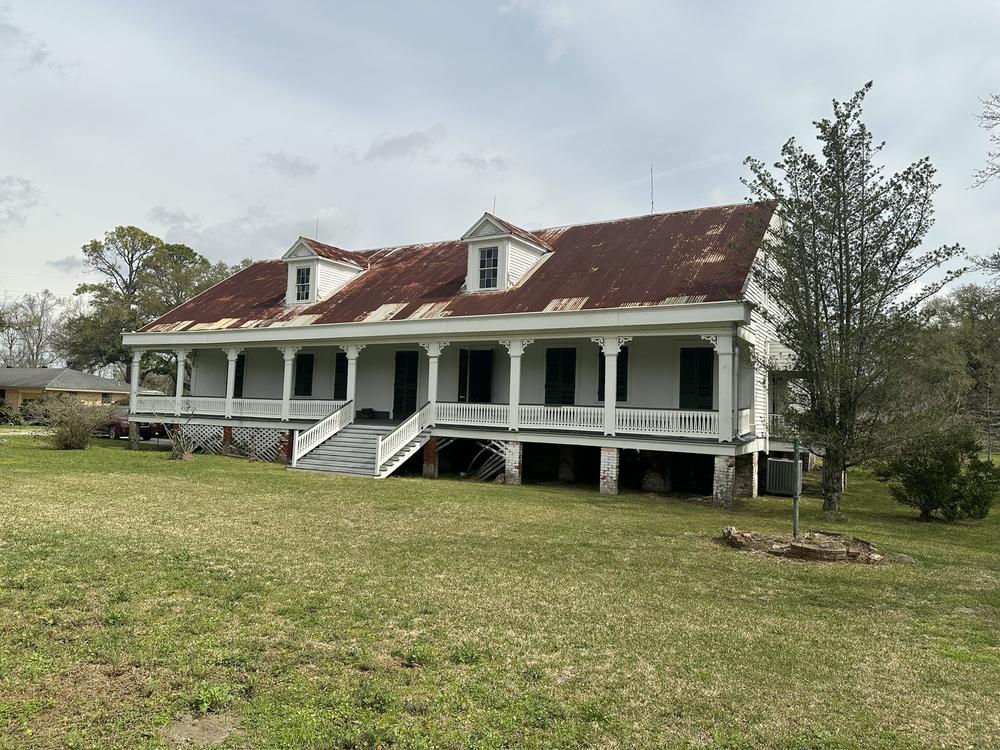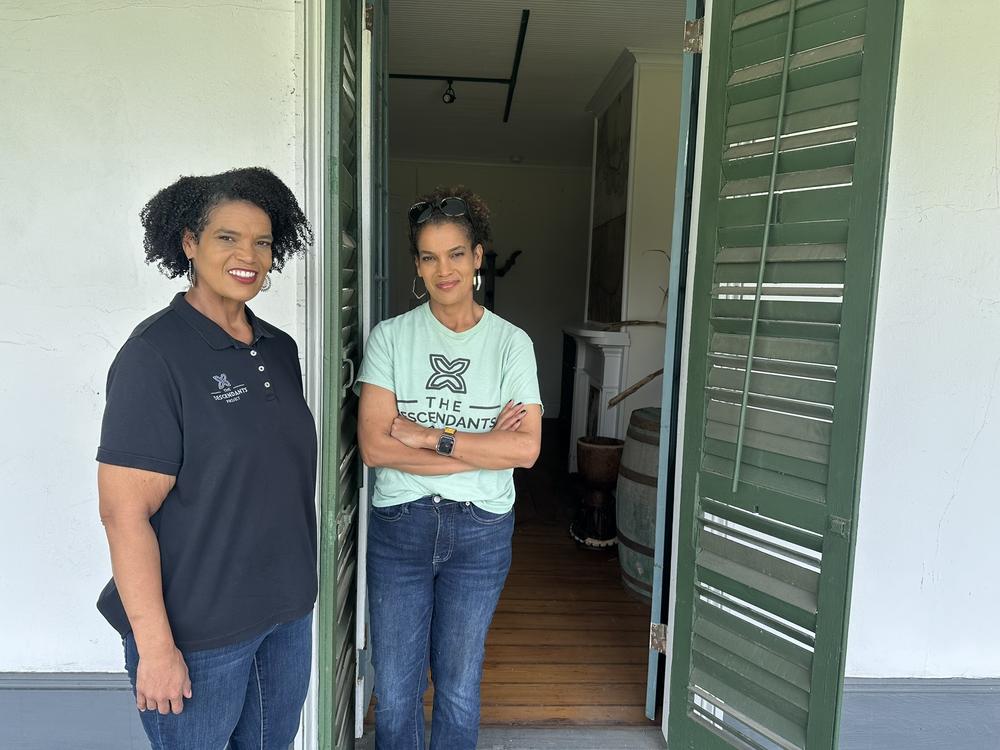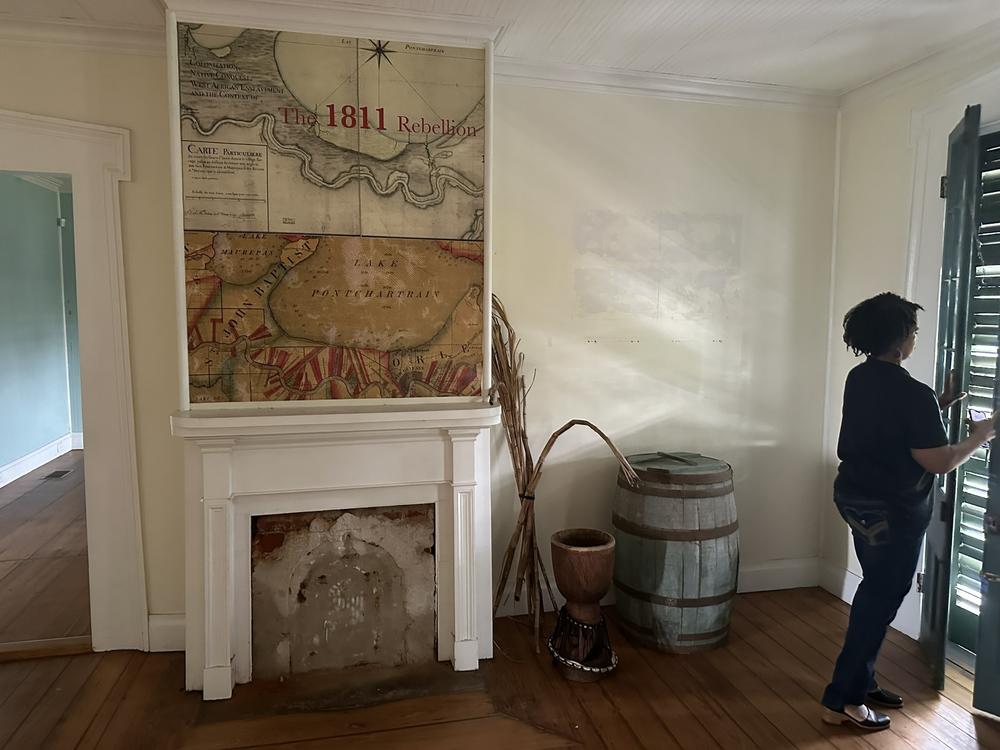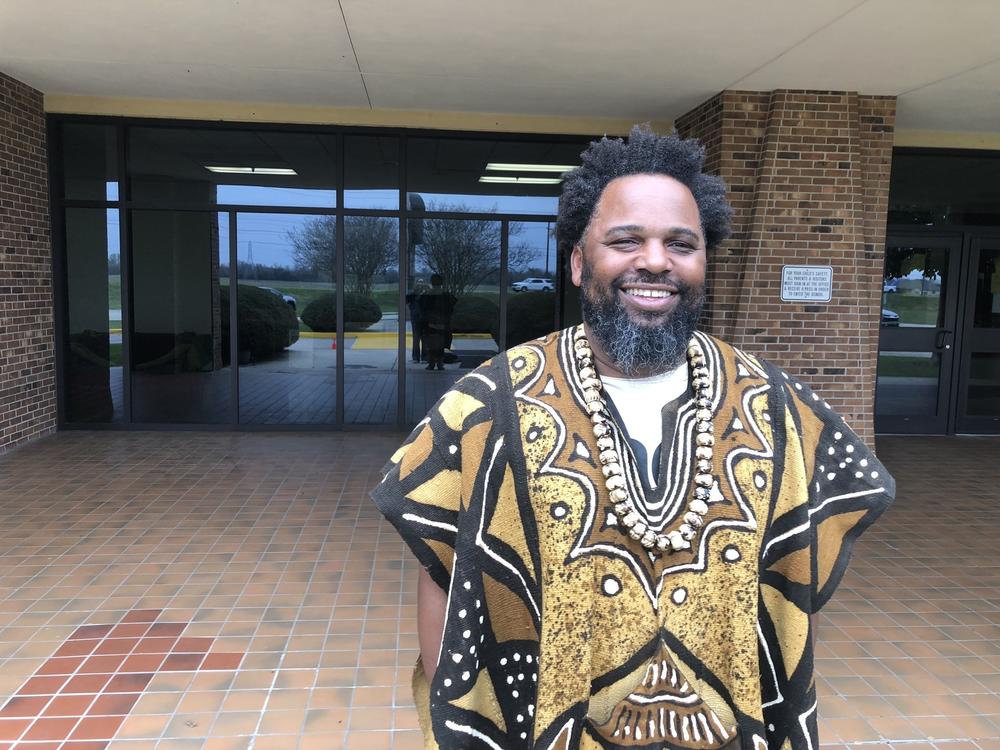Section Branding
Header Content
Louisiana plantation where historic slave revolt started now under Black ownership
Primary Content
LAPLACE, La. — Jo Banner is excited to show the newly acquired Woodland Plantation House near the banks of the Mississippi River.
“We have still a lot of work to do, but I think for the home to be from 1793, it looks rather good,” she beams.
The raised creole-style building has a rusty tin roof and a wide front porch. Forest green wooden shutters cover the windows and doors.
The site is historically significant because this is where one of the largest slave revolts in U.S. history began. It’s also known as the German Coast Uprising because this region was settled by German immigrants.
“The start of the 1811 revolt happened here, on this porch,” Banner says.
Banner and her twin sister Joy are co-founders of the Descendants Project, a non-profit in Louisiana’s heavily industrialized river parishes – just west of New Orleans. Early this year, the group bought the Woodland Plantation Home, putting it in Black ownership for the first time in more than two centuries.
“Our mission is to eradicate the legacies of slavery so for us, it's the intersection of historic preservation, the preservation of our communities, which are also historic, and our fight for environmental justice,” says Joy Banner.
The sisters plan to preserve it as a museum that will reinterpret the 1811 uprising as inspiration for new generations to confront racism.
“While others may see a beautiful plantation home, for us, this space means a lot,” Jo Banner says. “It's the knowing we have to keep fighting and knowing what footsteps we're following.”
She calls the hundreds of enslaved people who participated in the revolt “freedom fighters.” It started when they wounded white plantation owner Manuel Andry, killed his son, and commandeered weapons and other supplies. Historical accounts say the military-style revolt was led by a Creole man, Charles Deslondes, an enslaved overseer.
Both sides of the Mississippi were lined with sugarcane plantations at the time. That meant the enslaved were in close proximity, able to devise a plan to overtake the plantations one by one.
“So as they were marching from one space to the next, they were continuing to gather more people to join them for their fight,” she says. “The point was to get them to New Orleans so that they could gain their freedom.”
Their goal was to create a free territory in New Orleans. But within three days, the insurrection was brutally stopped.
Local militias backed by U.S. troops swiftly put down the rebellion, killing dozens of the people trying to escape slavery. More than 40 others were captured, put on trial, and executed.
Highlighting a once-hidden history
For decades that story wasn’t told during tours of the grand plantation homes lining the Mississippi River. The Banner sisters, descendants of two of those plantations, both worked in tourism in what has been marketed as New Orleans Plantation Country. Jo Banner says they saw firsthand the need for a more honest narrative.
“You're thinking of what? Gone with the Wind, the ladies in hoop skirts, the mint juleps,” she says. “You're really trying to portray this image of plantation life, removing the brutality of it, removing everything that made it what it was.”
The Banners say they want to create a space to foster what they call restorative, descendant-engaged tourism. They say that means using the site as a cultural center to celebrate the contributions of the enslaved, highlighting their architectural skill and artistic endeavors. For instance, the pioneering jazz composer and trombonist Edward “Kid” Ory was born at Woodland Plantation. The home itself has been highlighted by preservationists for its construction.
On a tour Jo Banner pulls back a section of drywall to show the handiwork of the enslaved who built the structure.
“You see the beams, you see the bousillage, which is a moss and mud, essentially a cement that's created,” Banner says. “You have the bricks here and the bricks were made on this property -- under the house, there's a kiln to make that.”
The Banners plan to have the Woodland Plantation Home open to the public next year, and will do private tours in the meantime. They say they will also commission an archeological exploration of burial grounds on the four-and-a-half-acre property.
Local activists welcome the new Black ownership of the site.
“We know that African-Americans lived on the plantation, worked that plantation, but never had that house been under Black ownership,” says Derron Cook, who grew up here in St. John the Baptist Parish. “So it's a different story now.”
He says even though his grandparents farmed near Woodland Quarters, the neighborhood where the enslaved once lived, he never learned about the 1811 uprising as a child.
“It was really more of a hidden history,” Cook says. “Being that it’s the largest slave revolt in U.S. history, right? That's amazing within this small community.”
Linking the 1811 rebellion to the fight for environmental justice today
A local high school teacher, Cook is trying to ensure that new generations can find inspiration from what he considers to be revolutionaries of their time.
“For people to be able to rise up who had quote unquote ‘no power,’ so those people took it upon themselves to try and create change,” says Cook. “We honor their story, their resilience. We honor their courage for being able to make that attempt to set up something for Black people where freedom would exist.”
Five years ago, Cook took part in a large-scale reenactment of the 1811 revolt.
“It was amazing to walk on to the levees along the Mississippi River 26 miles with machetes and muskets and other weapons, yelling ‘freedom or death’…and ‘on to New Orleans!’”
He recounts the violent story of what happened to the 1811 rebels in the end.
“They were actually captured, tried, found guilty and beheaded,” he says. “And their heads were placed on stakes and lined along the Mississippi River as a signal to other enslaved to not try to escape or to not try and fight.”
Jo Banner of the Descendants Project says the collective trauma of that lingers today, as descendants of the plantations struggle for the political voice to shape what happens in their communities.
“There are so many people who are just afraid to speak out, or don't feel that maybe they have the right to push back against a system,” she says. “Especially Black people feel that we have to be sacrificed or we have to sacrifice something in order to gain something.”
Banner says that means continually compromising with a system that has been bad for local residents because of the promise of economic development.
“We know it's bad, but what can we do so that our heads aren't cut off? How do we survive?”
The majority Black region is exposed on several fronts. The Environmental Defense Fund for instance, ranks St. John the Baptist parish number one on its U.S. climate vulnerability index.
It’s in the heart of what’s nicknamed Cancer Alley — the industry-laden stretch of the Mississippi River between New Orleans and Baton Rouge, where the EPA has found residents to be at high risk for exposure to hazardous pollution.
The Banners want the new Woodland museum to connect the history here to present conditions.
“That through-line of the plantation extraction of Black health, of Black land and Black communities till now we're seeing that same exploitation and extraction, but from the industrial petrochemical just encroachment of heavy industry in our communities,” says Joy Banner.
Her sister Jo says there are many textures and layers to the story, just like what’s revealed as she peels back a section of wall of the plantation house, revealing the mossy bousillage and locally fired brick columns.
“It’s bumpy. It switches. It's raw. Right? And I love looking at this because it reminds you this is the story we want to tell.”




